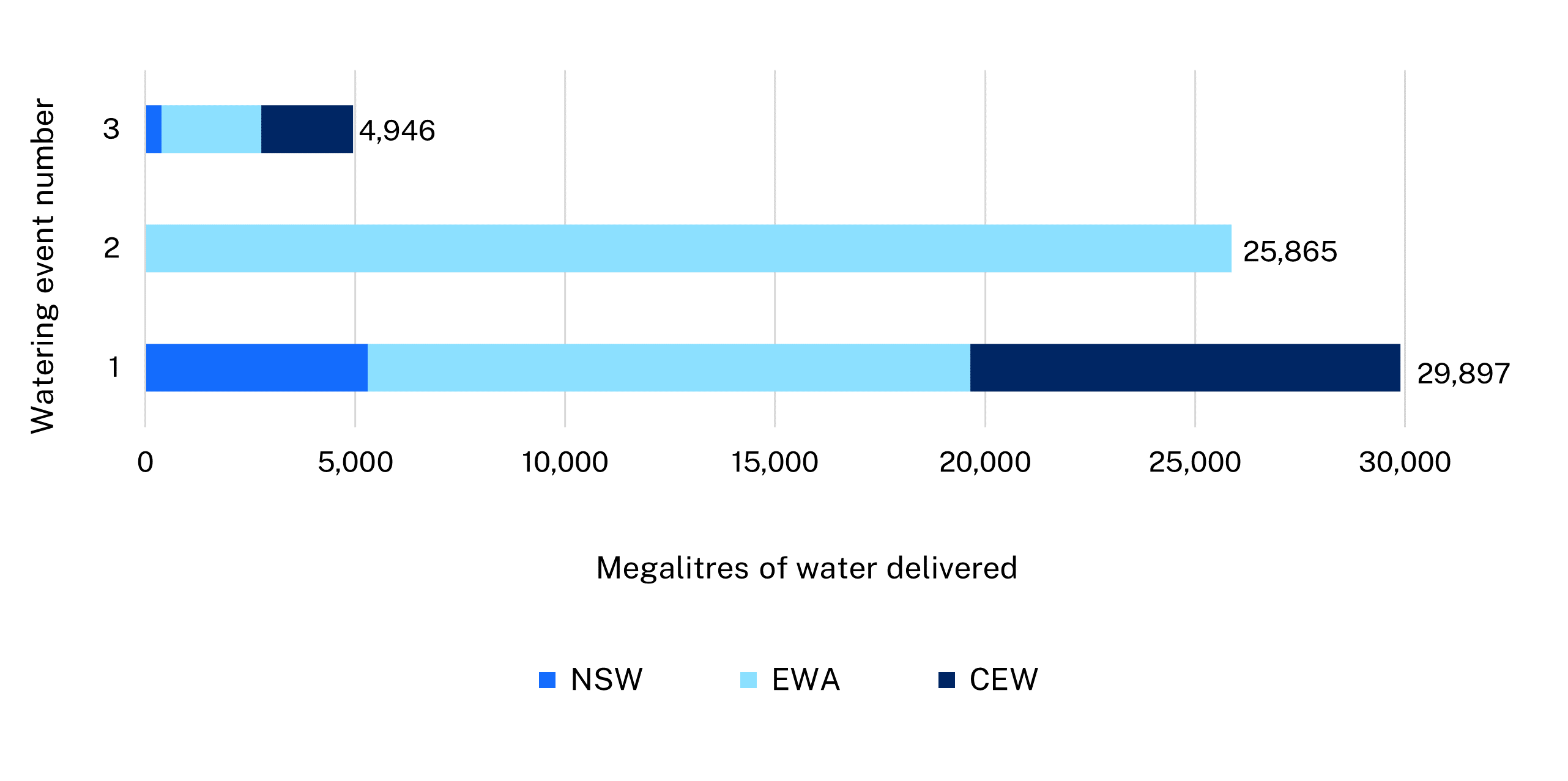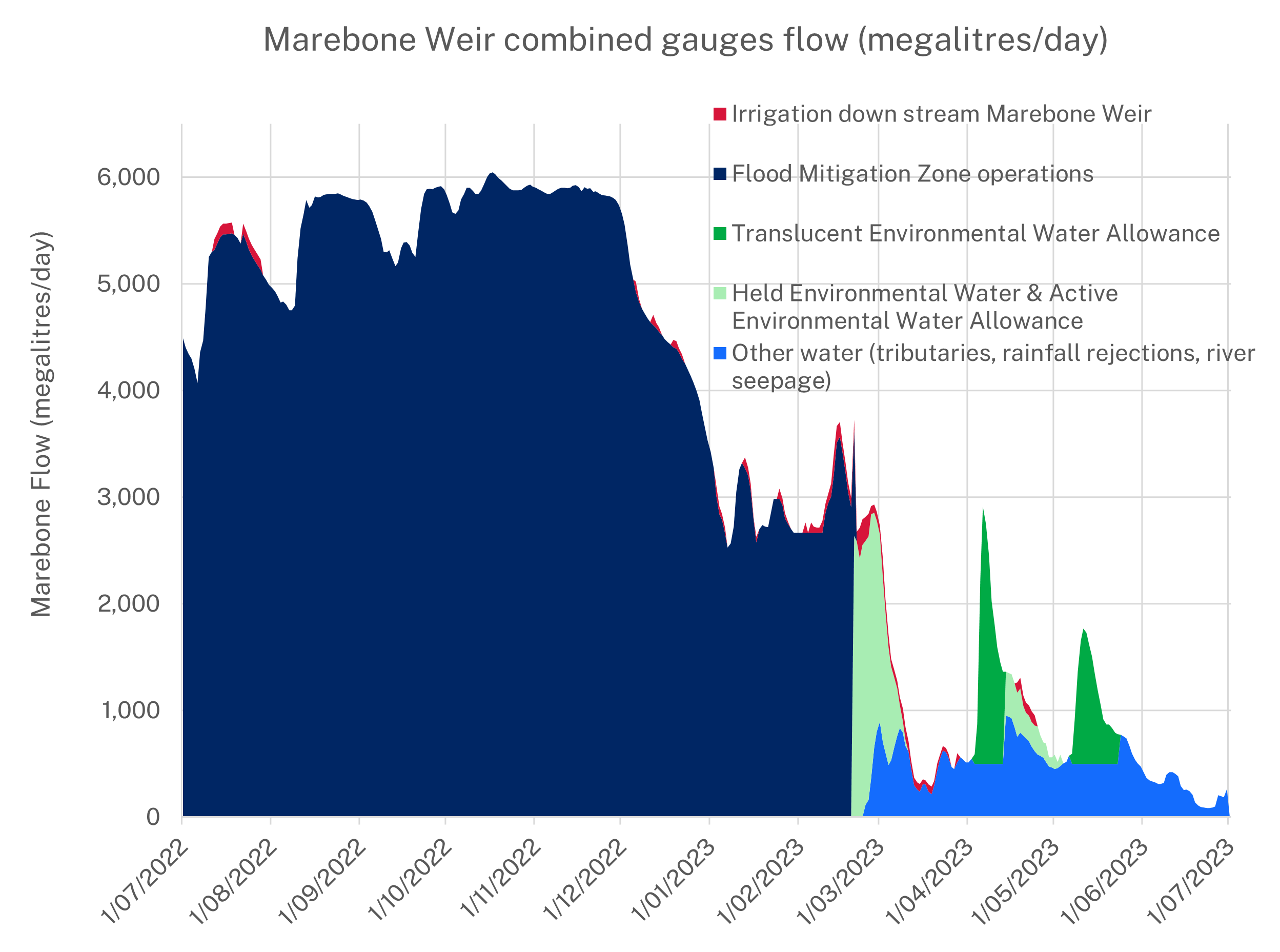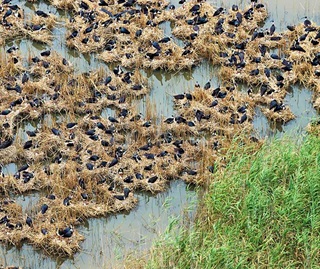Colonial waterbird breeding in the Macquarie Marshes and opportunities for native fish movement were the focus of managed environmental flows in 2022–23.
Key outcomes
Under wet conditions, environmental water managers worked with partner agencies and stakeholders to coordinate the delivery of water for the environment in response to varying flows and dam spills. Actions aimed to:
- maintain water levels at key colonial waterbird colony sites in the Macquarie Marshes
- allow the movement of native fish from the unregulated Lower Macquarie to the more secure conditions in the regulated mid-Macquarie River.

Catchment conditions
During late 2022 the weather in the Macquarie–Castlereagh catchment was influenced by a La Niña climate cycle, producing wet conditions and generally cool temperatures.
Burrendong Dam was still spilling from the start of the water year through to mid-February 2023. While dam operations aimed to minimise impacts to infrastructure, there were significant environmental benefits accrued. Windamere Dam also spilled in October 2022 – only the second time since commissioning in 1985.
The climatic influences of La Niña faded in early 2023, but autumn still brought some rainfall events to the catchment.
About the catchment
The Macquarie–Castlereagh catchment is in central west NSW and covers an area of 75,000 square kilometres. Major rivers are the Castlereagh, Macquarie and Bogan with major tributaries including the Cudgegong, Talbragar and Bell rivers. The catchment extends from the Blue Mountains to the Barwon River.
The Macquarie–Castlereagh catchment is home to the iconic Macquarie Marshes, one of the largest semi-permanent wetland systems and colonial waterbird breeding sites in inland Australia.
Water for Country
The Macquarie–Castlereagh is the Country of the Wiradjuri, Ngiyampaa, Wailwan and Kamilaroi Aboriginal peoples.
Water for Country is environmental water use planned by the Department of Planning and Environment and Aboriginal people to achieve shared benefits for the environment and cultural places, values and/or interests.
In the 2022–23 water year members were recruited to the Macquarie–Cudgegong Environmental Water Advisory Group, including a representative from the Wiradjuri nation. The department hopes to recruit further Aboriginal community representatives to this group.
Regional Water for Country staff and environmental water managers commenced an Aboriginal-led site-planning project with community members from Trangie that will continue into the next water year.
An Aboriginal waterways assessment was funded and undertaken on the Macquarie River by Wiradjuri Tubba-Gah people.





